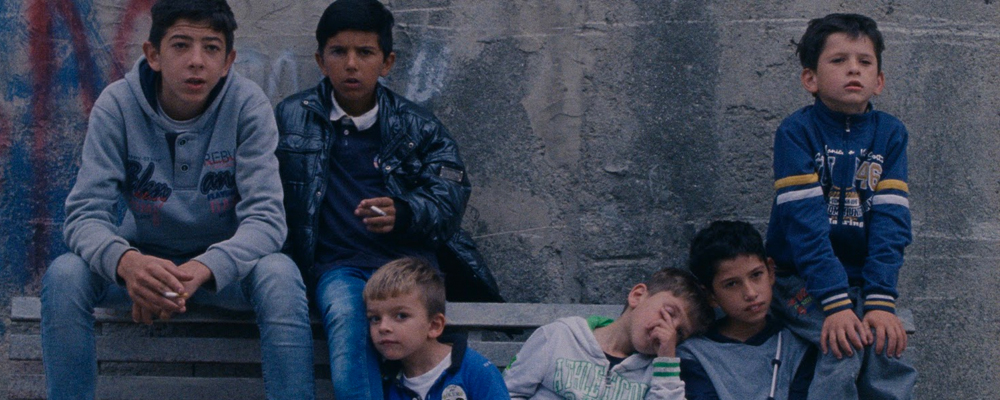‘A Ciambra’: Coming of Age Presents Tragic Choices for a Poor Romani Boy
Michael Amundsen
The beginning of “A Ciambra,” first screened at the Director’s Fortnight at Cannes in 2017, is set in the rugged interior of Calabria in southern Italy. It is a bleak countryside shrouded in fog. There is a lone dapple-grey horse and the bearded man with a black hat. The man strokes the horse affectionately. The film cuts to a Romani encampment on the riverside. It will be the only time we are exposed to a traditional Gypsy image of wagons, livestock and fires. “A Ciambra” is a story of modern Romani in a Calabrese ghetto called Gioia Tauro or Ciambra. In particular, it is the story of the coming of age of a 14-year-old boy Pio.
Inspired by Italian Neo-Realism, the movie integrates hand held camera, loose documentary-style editing and the casting of locals to weave a harsh tale of Pio’s determination to achieve adulthood. Towards that end, he makes a series of ill-advised choices, ones that leave him in the unenviable position of being forced to make one unthinkable decision that will determine Pio’s fate.
The director of “A Ciambra,” Jonas Carpignano, was born in New York City of a Calabrese father and an African mother, but was raised in Rome. He crewed on a number of short films in America in a variety of roles until ultimately working as a second second assistant director on “Beasts of the Southern Wild.” Soon after, he moved to his father’s hometown in Gioia Tauro, and there, soaking up the local culture, he began to make his own films.
In his first feature, “Mediterranea,” he examined the lives of African refugees who came to Italy to seek a better life. The film received global recognition and many festival awards. Encouraged, he made “A Ciambra” which he expanded from his well-received short of the same name. The two films share a title and largely the same cast. Many crewmembers from “Beasts of the Southern Wild” were recruited for the feature, most significantly the editor Affonso Gonçalves. Martin Scorsese joined as Executive Producer.
Pio Amato plays the young boy. A local Romani boy, he played the leading role in the short film. His real life family repeats their roles as his movie family. Koudous Selhon, who starred in “Mediterranea,” plays Pio’s African friend.
That opening scene is of a long gone reality for the Romani people. As Pio’s grandfather tells him before his death, Gypsies were once free and on the road. It was them against the world. But the realities of contemporary Europe have forced the Romani into another life, one of slums and subservience to the local Mafia (or the “Italiani” as they call them). They live a second-class existence, in constant fear of the police and their Mafia overseers. They have fallen into a devil’s bargain for survival in the world of the present.
And that world is a loud, confused mix of African refugees, native Calabrians of different economic status and the Romani. It is no longer the simple Calabria of Umberto Levi’s famous novel “Christ Stopped at Eboli.” Even the languages they use define their status in the community. Africans, mostly from Ghana, speak English amongst themselves or the occasional Twi. The Mafiosi and the Romani converse in the local Calabrese dialect. Only the educated and middle class speak actual Italian.
But in this new circumstance, the Romani continue to resist assimilation. Their group identity is their only source of pride. And it is this strong self-definition that forces Pio into making a terrible choice that will either give Pio what he wants or keep him true to bonds outside of his Romani world.
“A Ciambra” is tough movie of tough choices, none of which are bound to give the causal viewer any sense of redemption or catharsis. Instead, the audience will perhaps walk away with a stronger understanding of the present day realities of a world shaken with conflict and change, and afflicted populations on the move.
“A Ciambra” opens Jan. 26 in select theaters.



